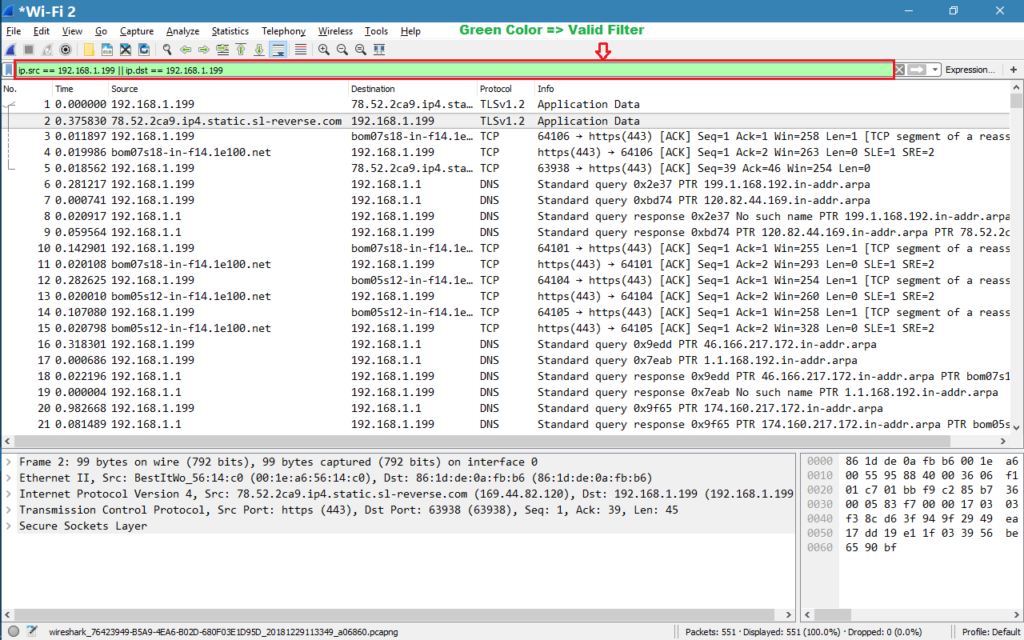

So, if you are looking to have the captures split out per hour, you would want to set up the property to 3600 as follows: Interval – This property will tell Wireshark when to switch to a new file when time is an exact multiple of the value configured in seconds.For example, in order to only capture traffic to/from a specific IP address, the filter would look like this: Filter – This property tells Wireshark the capture filter to use for narrowing down which packets to capture.Folder – This property will tell Wireshark where to place the captures.This means that our property will look like the following: As you can see above, the adapter we are going to use for this example is going to be Interface 11.
WIRESHARK COM INSTALL
Now, from Wireshark’s Install directory, run the command tshark – D:.Then look for the network interface that you would like to run the capture for:Īs you can see above, the interface that we will be using in this example is called “Ethernet Adapter Ethernet 5”.Open Command Prompt and Run the command ipconfig:.

If you are not sure which interface it needs to be, you can do the following:
WIRESHARK COM HOW TO
How to Determine the Parameters for Custom Wireshark CapturesĬonfiguring the script is simple and it only requires setting five Wireshark properties and one command.
WIRESHARK COM FREE
However, if you are already familiar with how to use Wireshark’s graphical interface and run simple captures, feel free to continue with the rest of this post. That post will provide you with a great explanation on what Wireshark is and how to use it to troubleshoot network communications. If you haven't used Wireshark before and aren't familiar with the basics, we strongly suggest you first take a few minutes to read the Tech Support Corner: Using Wireshark as a Supplemental Troubleshooting Tool post. ĭo you ever find yourself in need of troubleshooting Network Traffic using Wireshark, but you are concern with at how much storage the captures will take on the system? Well, you are in luck because today, we will learn how to write a simple script for running custom Wireshark captures. Wireshark also provides options for specifying capture filters (for defining a smaller subset of data to be captured that you're interested in) or you can capture all traffic and apply a display filter to narrow down the traffic that is visible.Ĭontinuing our Tech Support Corner blog series, this blog post covers how to go even further using Wireshark by defining scripted custom Wireshark captures for specific use cases, which is helpful for capturing infrequent issues without wasting a lot of unnecessary hard drive space. Our support engineers find it to be invaluable for troubleshooting Ethernet communications issues, as it provides visibility into more than just the protocol data packets, including handshaking calls and responses. As you may be aware, Wireshark is an incredibly useful freeware tool for capturing network traffic on a computer.


 0 kommentar(er)
0 kommentar(er)
